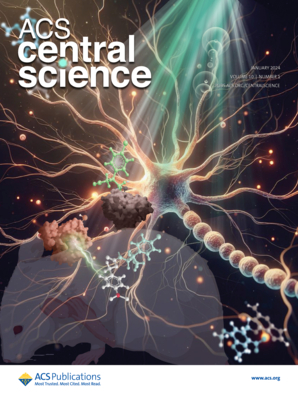Synergistic Coupling of CuNi Alloy with CoFe LDH Heterostructure on Nickel Foam toward High-Efficiency Overall Water Splitting
IF 12.7
1区 化学
Q1 CHEMISTRY, MULTIDISCIPLINARY
引用次数: 0
Abstract
Accelerating the kinetics of oxygen evolution reaction (OER) and hydrogen evolution reaction (HER) is vital for high-efficiency green hydrogen production. However, developing cost-effective and highly active bifunctional catalysts for overall water splitting electrolysis remains a huge challenge. Herein, CuNi/CoFe LDH heterostructure is synthesized in situ on the nickel foam (CuNi/CoFe LDH@NF) by a simple two-step electrodeposition process. The synergy of CuNi alloy and CoFe LDH optimizes the electron distribution at the interface and improves the intrinsic activity of HER/OER. Consequently, the optimal CuNi/CoFe LDH@NF bifunctional catalyst displays low overpotentials of 56 mV (10 mA cm−2) and 268 mV (50 mA cm−2) for HER and OER, respectively, along with high stability in alkaline electrolyte. Remarkably, CuNi/CoFe LDH@NF as the cathode and anode requires a low voltage (1.49 V) to achieve 10 mA cm−2 for overall water splitting. Meanwhile, it also displays favorable stability for operation for 17 h (50 mA cm−2) without obvious decline of cell voltage. Density functional theory calculations indicate that constructing heterojunction interfaces promotes the redistribution of interface electrons and optimizes the free energy of adsorbed intermediates, thereby reducing the energy barrier of the rate-determining step (from *O to *OOH).镍泡沫上的铜镍合金与 CoFe LDH 异质结构的协同耦合,实现高效整体水分离
加速氧进化反应(OER)和氢进化反应(HER)的动力学对于高效绿色制氢至关重要。然而,为整体水分离电解开发具有成本效益和高活性的双功能催化剂仍然是一个巨大的挑战。本文通过简单的两步电沉积工艺,在泡沫镍上原位合成了 CuNi/CoFe LDH 异质结构(CuNi/CoFe LDH@NF)。CuNi 合金和 CoFe LDH 的协同作用优化了界面上的电子分布,提高了 HER/OER 的内在活性。因此,最佳的 CuNi/CoFe LDH@NF 双功能催化剂对 HER 和 OER 的过电位较低,分别为 56 mV(10 mA cm-2)和 268 mV(50 mA cm-2),而且在碱性电解质中具有很高的稳定性。值得注意的是,作为阴极和阳极的 CuNi/CoFe LDH@NF 只需较低的电压(1.49 V)即可实现 10 mA cm-2 的整体水分离。同时,它还显示出良好的稳定性,可连续运行 17 小时(50 mA cm-2)而电池电压不会明显下降。密度泛函理论计算表明,构建异质结界面可促进界面电子的重新分配,优化吸附中间产物的自由能,从而降低决定速率步骤(从 *O 到 *OOH)的能垒。
本文章由计算机程序翻译,如有差异,请以英文原文为准。
求助全文
约1分钟内获得全文
求助全文
来源期刊

ACS Central Science
Chemical Engineering-General Chemical Engineering
CiteScore
25.50
自引率
0.50%
发文量
194
审稿时长
10 weeks
期刊介绍:
ACS Central Science publishes significant primary reports on research in chemistry and allied fields where chemical approaches are pivotal. As the first fully open-access journal by the American Chemical Society, it covers compelling and important contributions to the broad chemistry and scientific community. "Central science," a term popularized nearly 40 years ago, emphasizes chemistry's central role in connecting physical and life sciences, and fundamental sciences with applied disciplines like medicine and engineering. The journal focuses on exceptional quality articles, addressing advances in fundamental chemistry and interdisciplinary research.
 求助内容:
求助内容: 应助结果提醒方式:
应助结果提醒方式:


